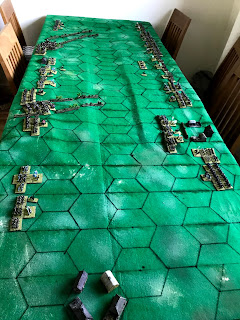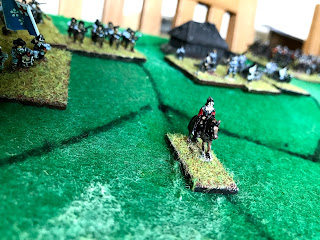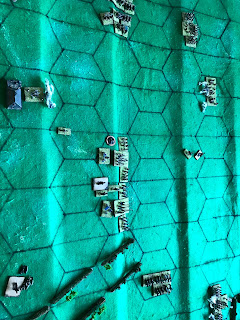Not massive numbers of anything in particular, but these are all the jobs that get pushed back whenever I acquire more horse or foot.
- Finish ECW 'clubmen'. Just 'texturing the bases and a bit of touching up paint. Tempted to get more. Can double-up for the Monmouth Rebellion (in fact they're from the League of Augsburg range).
- Texture ECW casualty marker bases.
- Finish ECW musketeers. Probably at least a regiment's worth. Maybe have as firelocks?
- Finish ECW command figures. A few to paint and texture bases.
- Finish ECW odds and sods, e.g. limbers.
- Paint bridges.
- Finish AWI. Quite a few Brits done but no Yanks. Brits need cleaning up too.
- WWII Finns and Russians (10mm) - lots of infantry (some painted and based by Old School Tony) and AFVs. These are for the Continnuation War as when I made my first order and anxious to get something Pithead Miniatures didn't have Winter uniformed Finns. Probably a good thing really as the Continnuation War has more variety of scenarios.
- Touch up and base 6mm siege train, pontoons and transport. These I kept pretty generic so they could be used with any army - not that I have a fortress or a ruleset I'm happy with.
- Paint and base 6mm cattle/bullocks - Baccus, bought with my Naps. Too big for my SYW (H&R and Irregular).
- Base Leven hedges so they don't keep falling over. Corner pieces will be ticky unless I want to fix them permanently to the 'straights'.
- Finish 6mm gabions. I bought lots of dowels - thicker for my 10mm figures and thinner for 6mm. Cut into appropriate lengths they make cheap and half-decent looking gabions. Which are needed in large numbers for sieges.
In case you are still reading.....Reboxing of my 6mm SYW and Napoleonics has been completed. I was buying Ferrero Rocher* boxes 1 at a time until last weekend I thought 'who am I kidding?' I'm going to buy more so why not do it in one go. As it was the five extra I bought are now nearly all full. I will need more for the AWI and WWII collections. My old Ikea boxes have been repurposed for terrain bits, earthworks and buildings.
For the record the FR box numbers are:
- 6mm SYW: 10
- 10mm ECW: 6
- 6mm Naps: 5
 |
| The whole lot. Not bad for 7 armies. |
 |
| 8/10 of the SYW collection |
 |
| ECW and 2/10 of SYW |
 |
| Naps |
This will also necessitate re-organisation of the cupboards in the dining room which contain books, files and glassware (whatever next?) as well as the collection. In fact books around the house need a re-org too because the ECW collection has grown the female members of the household never puts things back where they belong. I have acquired a built in shelf in the new stairway, built last year for the loft extension. Conveniently positioned for my place of easement too. I suppose I could put my toys in one of the 'new' built in cupoboards upstairs but that's not so convenient for the dining gaming table. Hmmm.
* for the reason why see the old post Boxing and Basing, or ‘Ambassador, you are spoiling us’
However. All of this just eats either into gaming time or my 'wasting time' time. Maybe I should give some of the latter the heave ho and start making more productive use of my evenings.















































